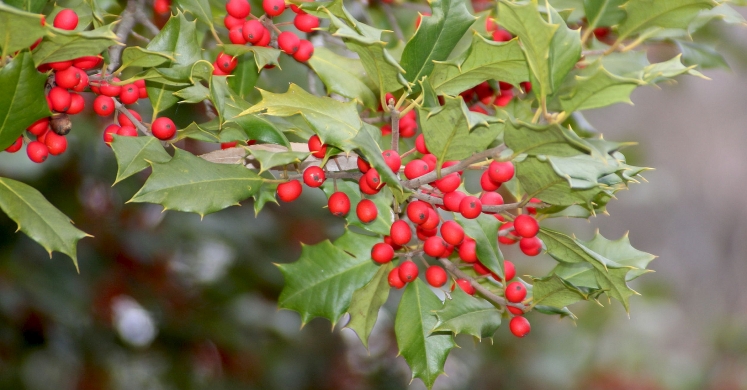Blog

#bioPGH Blog: American Holly
 A resource of Biophilia: Pittsburgh, #bioPGH is a weekly blog and social media series that aims to encourage both children and adults to reconnect with nature and enjoy what each of our distinctive seasons has to offer. From the best times to plant seasonal flora and enjoy their peak blooms, to astronomical events and creatures to keep an eye and ear out for, Phipps will keep you in the know with what’s going on in our environment!
A resource of Biophilia: Pittsburgh, #bioPGH is a weekly blog and social media series that aims to encourage both children and adults to reconnect with nature and enjoy what each of our distinctive seasons has to offer. From the best times to plant seasonal flora and enjoy their peak blooms, to astronomical events and creatures to keep an eye and ear out for, Phipps will keep you in the know with what’s going on in our environment!
‘Tis the season to be jolly and here at Phipps we’ve decked the halls with tons of holly! In celebration of the opening of our long-awaited Winter Flower Show and Light Garden, “Deck the Halls,” we’re talking about American holly, or Ilex opaca. American holly is a pyramidal, or cone-shaped, evergreen tree with spiny, leather-like dark green leaves that is native to the eastern and central United States. These evergreens are dioecious, meaning there are male and female versions of the plant, and they produce greenish-white flowers throughout the months of May and June. However, American holly is more easily recognized by the bright red and orange berries produced by the female plant from September through December. The berries tend to remain on the tree long into winter, providing food to over-wintering birds as well as the berry-laden boughs that are commonly used as holiday decorations! Did you know that holly branches were even gifted by the ancient Romans to friends and family during the ‘Festival of Saturnalia,’ a festival held in honor of the Roman deity Saturn during mid-December, as they were believed to ward off witchcraft and lightning strikes?
Connecting to the Outdoors Tip: Holly is definitely one of a few plant species that continues to add color to the landscape long after the last of the fall flora has been put to rest and the first snow has settled in. If you happen to be out and about in a forested area, or are fortunate enough to have a mature holly tree near your home, keep an eye out for the bright red and orange berries of the female holly tree and try to spot which birds are particularly fond of snacking on the fruit. Consider drawing the birds, taking pictures, or keeping count of different types of birds you see. Even if you don’t happen to have a holly tree handy, you can still ‘deck the halls’ with your own handmade holly holiday decorations. With just a few pieces of green and red construction paper, some glue and a piece of ribbon you can help little ones make their own hand print holly wreaths. Also consider ‘decking the halls’ with your own customized clear-glass ornaments. These see-through ornaments are a great way to display your favorite memories and special keepsake items for all to admire, and they make fast and fun gifts as well!
Continue the Conversation: Share your nature discoveries with our community by posting to Twitter and Instagram with hashtag #bioPGH, and R.S.V.P. to attend our next Biophilia: Pittsburgh meeting.
Additional Resources:
Ilex opaca - Missouri Botanical Garden
Kids Hand Print Christmas Wreath Tutorial - My Name Is Snickerdoodle
25 Ideas for Decorating Clear Glass Ornaments - The Ornament Girl

